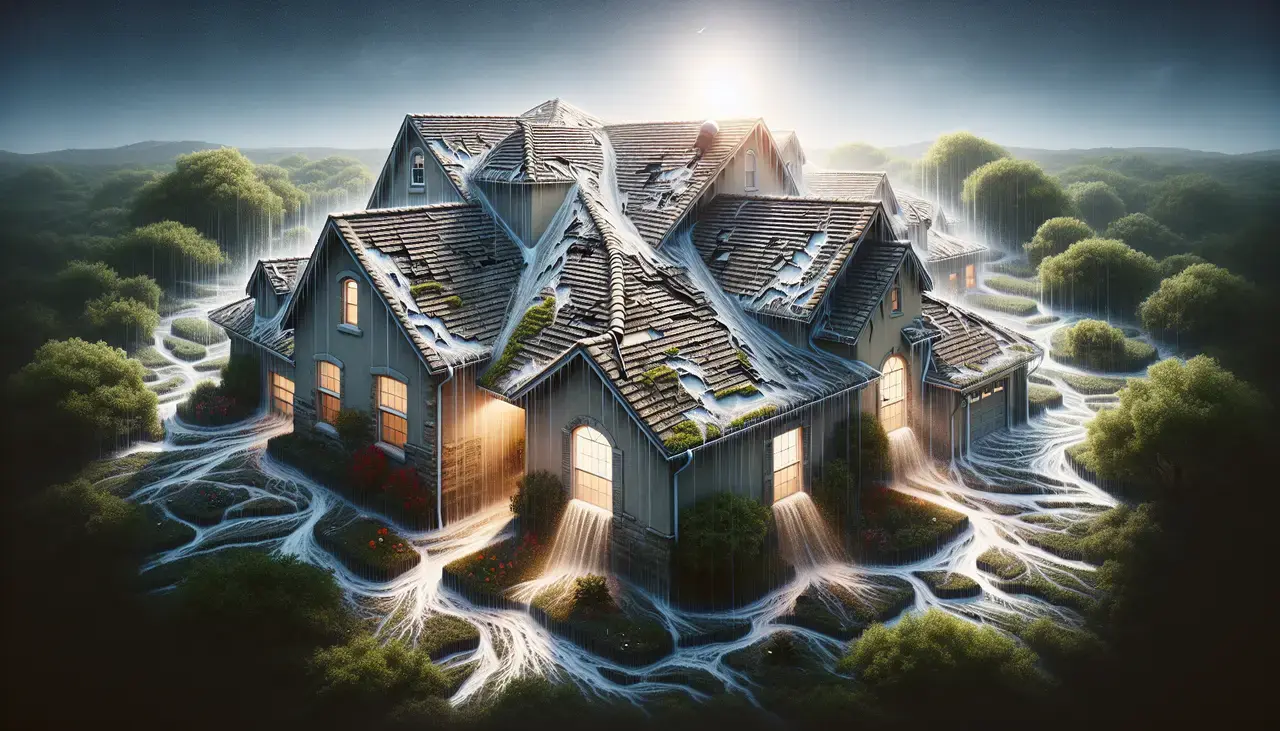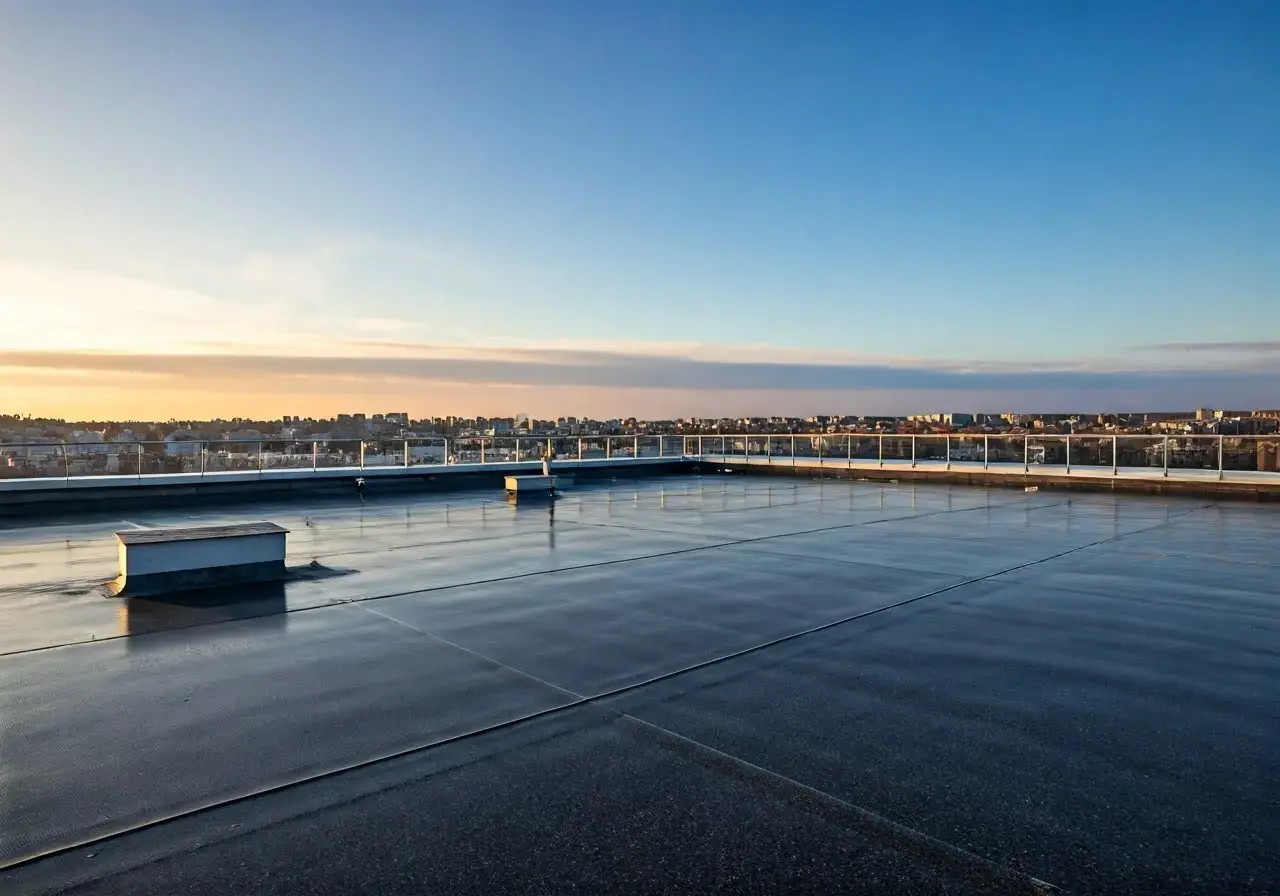8 Signs Your Roof Needs Immediate Maintenance

Your roof is one of the most critical components of your home, protecting against the elements and ensuring comfort inside. However, like any other part of your house, it needs regular maintenance. Let’s explore some tell-tale signs that your roof may require your immediate attention.

1. Visible Shingles Damage
Shingles serve as your home’s first defense against the harsh outdoors. They bear the brunt of sun, wind, and rain, and over time, they can start to show signs of stress. If you observe shingles that are cracked, curled at the edges, or even missing altogether, it’s a tell-tale sign that your roof is crying for help. This damage not only affects the aesthetic of your home but also its functionality. A compromised shingle can allow water to penetrate the layers beneath, leading to leaks and water damage inside your home. Regular roof checks can help catch shingle wear before it turns into a severe problem, and hiring a professional to inspect and replace damaged shingles can prevent further degradation.
Ignoring shingle damage can be costly. The longer you wait, the bigger the risk of water infiltration, which can lead to rot and weaken the roof structure. It’s worth noting that shingles are designed to work as a system. Even a small patch of missing shingles can disrupt this balance, leading to pressure points and more extensive damage. Consider performing visual inspections after storms or high-wind events, paying attention to any areas of the roof that seem suspicious. Acting quickly on these observations with emergency roof repair services can mitigate the risks and save you unnecessary expenses in the future.
2. Unexpected Interior Leaks
Leaks are among the most obvious signs that your roof needs attention and potentially, immediate repairs. Discovering a water stain spreading across your ceiling or walls can be disheartening and time is of the essence. Water infiltration not only leads to cosmetic issues but can weaken your home’s structural integrity, causing long-term damage if left unchecked. These leaks can be deceptive, often starting small and growing with each rainstorm. Ensuring you address such issues promptly can prevent more serious water-related problems like mold growth, which thrives in damp, dark environments like attics and behind walls.
The origin of a leak isn’t always directly above the noticeable stain, as water can travel along beams and edges before pooling. This makes tracking down the source a challenge and often requires a thorough investigation, sometimes by a professional. Using tactics such as attic inspections during daylight hours—looking for streams of light filtering through or damp spots—can assist in pinpointing leaks. Once spotted, enlist the help of a professional roofing service to handle the repair, sealing your home back up against the elements and ensuring long-term protection.
3. Sagging Roof Lines
Sagging in your roof is a red flag that requires immediate attention. A roof is designed to bear weight and resist structural shifts; a sagging roof line typically indicates that these capabilities have been compromised. This issue is not only visually unappealing but can also hint at more severe structural problems underneath, such as rot or weakened support beams. Sagging can result from several factors, including prolonged exposure to moisture, excessive weight from snow or debris, and aging materials which lose their strength over time. If you notice areas of your roof dipping or appearing uneven, action should be taken immediately to rectify the issue.
The severity of sagging is often determined by what is causing it. In some cases, moisture buildup due to inadequate drainage is the culprit, while in others, a more severe underlying issue such as failure of the roof trusses might be to blame. In all cases, consulting roofing professionals for a detailed inspection is recommended. They can assess the damage, determine the root cause, and propose the necessary steps for repair. By addressing these structural issues promptly, you ensure your home remains safe and secure for all occupants.
4. Increased Energy Bills
Noticeably higher energy bills can subtly indicate that your roof requires maintenance. Often, the culprit is poor insulation caused by damage such as cracks or deteriorated materials, allowing air to escape. In such cases, your heating and cooling systems must work overtime, raising energy costs. A well-insulated roof acts as a barrier against outside temperatures, maintaining your home’s internal climate effectively without overburdening your HVAC system. Inspecting your attic for drafts and checking insulation levels after any significant temperature changes can help pinpoint potential insulation issues.
Additionally, the presence of drafts or fluctuating temperatures in your home could denote roofing problems. The longer these issues persist, the higher your energy bills may climb. Alleviating these financial pressures involves inspecting the roof’s insulation and replacing any compromised materials. Measures like adding insulation or sealing air leaks can significantly reduce energy usage and maintain comfort within your home. Addressing these problems proactively not only smooths your budget but also extends the longevity of your HVAC equipment and roof, proving long-term savings.
5. Presence of Granules in Gutters
The presence of shingle granules in your gutters is a common but often overlooked indicator of roof wear. These granules form a vital part of asphalt shingles, providing a protective layer against UV rays and enhancing resilience against weather changes. Over time, as shingles age or are subjected to harsh conditions, they can begin to shed granules. If you consistently find granules accumulating particularly after storms, it signifies that your shingles are deteriorating—prompting repair or replacement. This silent progression often goes unnoticed until an inspection is carried out, underscoring the prudence in regular gutter checks.
Loss of these protective granules reduces the effectiveness of shingles, exposing them to accelerated aging and damage. If unchecked, this process can lead to significant issues, including leaks and further structural damage. Regularly clearing debris from gutters not only prevents water overflow but also serves as an opportunity to detect and address deterioration early on. Professional inspections can determine the extent of shingle loss and advise the appropriate steps, ensuring your roof continues to provide substantial protection against the elements over time. This proactive approach keeps your home safe and shields you from potentially heavier repair costs.
6. Moss or Algae Growth
While moss or algae growth on your roof might lend a picturesque appeal, it’s generally a sign of improper roof health. These organisms thrive in damp, shaded conditions and retain moisture against the roof’s surface, which can lead to more extensive issues. Over time, trapped moisture fosters wood rot, permits mold growth, and can even degrade shingles. It’s crucial to address these infestations promptly to maintain your roof’s integrity and curb potential secondary damages.
To mitigate moss or algae buildup, consider enhancing roof ventilation and sunlight exposure by trimming overhanging trees. Utilizing specially formulated roof cleaning solutions can remove accumulated growths without causing damage to your roofing materials. However, make sure to avoid high-pressure washing as it can harm shingles more than help. For serious infestations, professional cleaning might be necessary. Monitoring this growth and maintaining a clear, dry roof surface through seasonal cleanings can substantially prolong your roof’s life and ensure enduring protection for your home.
7. Flashing Damage
Flashing plays a vital role in roof architecture, bridging different materials and preventing water infiltration at seams and intersections like chimneys, skylights, or vent pipes. When flashing is compromised—be it cracked, corroded, or improperly sealed—the risk of leaks rises significantly. If left unaddressed, these leaks can percolate into the attic or internal walls, causing broader structural issues and potentially leading to costly repairs. Regular roof inspections should include a check for any flashing damage, ensuring prompt repair and maintenance to reinforce these vulnerable junctions.
Repairing flashing often involves resealing joints or replacing segments entirely. It’s a task best left to professionals, who can ensure each component is aligned correctly and adequately sealed. When done correctly, proper flashing repairs not only seal off entry points for water but also fortify your roof’s longevity. Preventative maintenance, such as timely inspections and swift repair of detected damage, ensures that flashing remains a sturdy, reliable element of your roofing system, safeguarding your home from the unpredictable elements.
8. Ceiling and Wall Staining
Staining on ceilings and walls often acts as an alert to underlying roofing issues. These stains are usually indicative of water infiltration, which if left ignored, can progress into severe structural damage and promote mold growth. Such stains might be subtle at first, presenting as small water rings or discolored patches, but they will expand over time. As soon as any stains are noticed, it’s crucial to investigate their source, as this will help prevent additional problems and expenses stemming from neglected water damage.
If the stain is fresh, using mild cleaning solutions could halt further spreading; however, such measures are often mere stopgaps. Identifying the origin warrants a more thorough inspection. Often, the cause lies with damaged shingles or inadequately sealed joints, both of which require professional attention. Consulting a qualified roofing contractor can facilitate rooting out the problem, offering solutions that ensure lasting protection—mitigating the risk of extensive internal damage due to water intrusion. Regularly monitoring your interiors for these visual clues helps preserve your property’s structural soundness, keeping you well ahead of any potential roofing crises.

